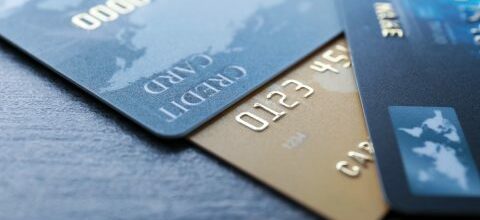How Does LendingTree Get Paid?
Advertising Disclosure
American Express Disclosure
Should I Get a Balance Transfer or Personal Loan?
Key takeaways
- A balance transfer credit card and a personal loan are both good options if you’re struggling to pay off debt.
- A balance transfer credit card is best for consolidating high-interest credit card debt that you’ll be able to pay off during a 0% intro APR period (typically six to 21 months). You’ll need good to excellent credit to qualify for most balance transfer credit cards.
- A personal loan is best if you have high amounts of debt that you’ll need a longer period to pay off. Personal loans have a fixed monthly payment and are more accessible if you have a lower credit score.
When you’re looking to pay off high-interest credit card debt, doing a balance transfer to a 0% APR credit card or taking out a personal loan are two powerful strategies. Deciding which option is best for you will depend on how much debt you’re carrying, how long you need to pay it off and how good your credit score is.
Balance transfers vs. personal loans
| Balance transfer credit cards | Personal loans | |
|---|---|---|
| Types of debt | Credit cards | Multiple kinds of debt |
| Recommended amount of debt | Smaller debts that can be quickly paid off | Larger debts that take longer to pay off |
| Recommended credit | Good to excellent | Bad to excellent |
| Interest rate |
| ~5.99% to 35.99% fixed APR |
| Fees | Balance transfer fee of 3% to 5% | Origination fee up to 12% |
What to consider when deciding between a balance transfer or personal loan
- What type of debt do I have?
Personal loans are extremely flexible and can be used to consolidate multiple kinds of debt, including credit card debt. Balance transfer cards can typically only be used to consolidate other credit card balances. - How much debt do I have?
Balance transfer cards are better if you have small amounts of high-interest credit card debt, since the intro APR is relatively short and regular APRs can be high. Personal loans are better if you have a large amount of debt because they have a lower fixed APR and generally offer a longer period to pay off debt. - How much interest will I pay?
Personal loan APRs are fixed, which means you can count on getting the same low APR over a long period. Balance transfer credit cards offer a 0% APR period for anywhere from six to 21 months. After that, a high APR will usually apply. If you don’t pay off your debt within the intro period, you may end up paying more in interest with a balance transfer card than with a personal loan. - What fees should I look out for?
Most balance transfer cards charge a fee of 3% to 5% of the amount you’ve transferred. There are cards with no balance transfer fee — however, they’re rare and often require you to qualify for credit union membership.Personal loans can be even more expensive, with some charging an origination fee as high as 12% of the loan amount. This is something to look out for before you apply for a loan, especially if you’re consolidating debt from other accounts. You should ensure that the costs are worth the interest savings. - What can I qualify for with my credit score?
Balance transfer credit cards are typically only available if you have good to excellent credit. Personal loans for bad credit are possible to get approved for even if you have a lower score. However, you may have to pay higher interest rates - How will my credit score be affected?
Both personal loans and balance transfer credit cards can help you improve your credit score over time by enabling you to pay off debt faster.However, taking out a personal loan may have a more immediate positive impact on your credit score by lowering your credit utilization ratio. Credit utilization is how much debt you currently have in relation to available credit. It includes utilization on individual revolving accounts (i.e., credit cards) as well as your overall ratio of debt to available credit. If you transfer debt from a credit card to a personal loan, your utilization on your credit card account will drop to 0%, which may significantly boost your score.On the other hand, if you transfer debt from one card to another, or from multiple cards onto a single card, your utilization on the new card will likely be very high, which may cause your score to drop.
When is a balance transfer best?
A balance transfer to a credit card offering a 0% intro APR offer is best when:
- You want to avoid interest charges entirely.
- You’re able to pay off your debt in full within the intro APR period.
- You have a good to exceptional credit score (typically considered a 670-to-850 FICO Score).
Do the math to decide if you can pay off a balance transfer in time
But let’s consider the same situation if you have a $4,000 balance instead of $1,000. The 3% balance transfer fee will cost you $120 in this scenario, resulting in a balance of $4,120 on your new card. It will take a monthly payment of approximately $343.33 to pay your balance off in 12 months.
How does a balance transfer card work?
When you do a balance transfer, you’re essentially moving existing debt to a new credit card — typically one with a 0% intro APR offer. Some card issuers allow you to move other types of debts (including personal and auto loan debt) via balance transfer, but in general you can only transfer balances from other credit cards. Any balance remaining after the intro APR expires will be subject to the card’s ongoing interest rate, which is likely to be high.
Tip
When is a personal loan for debt consolidation best?
You should consider using a personal loan to pay off your credit card debt if:
- You have a large amount of debt and don’t think you’ll qualify for a high enough credit limit to cover it.
- You need more time to pay off your debt than the average six to 21 months that a balance transfer card might offer.
- You’re not sure your credit score is good enough to qualify for a balance transfer card.
Unlike with a 0% intro APR credit card, there’s no interest-free period. However, you could still save money over carrying debt on a credit card with a high APR. A personal loan can be helpful if you need to consolidate debt from multiple credit cards — it simplifies your finances, so you just have one payment to keep track of.
How does a personal loan work?
When you take out a personal loan, you’ll get a set repayment period (often ranging from 12 to 60 months) and a fixed monthly payment.
A personal loan is considered an installment account rather than a revolving account like a credit card. Only revolving accounts factor into your credit utilization ratio. For this reason, paying off credit card debt with a personal loan might improve your credit score as you use the loan proceeds to zero out your card balances.
APRs on personal loans range from 6% to 36%, according to the credit bureau Experian. Unlike credit cards, where the interest rate and the APR are the same, they’re two distinct numbers in the context of personal loans — the interest rate is part of what makes up your loan’s APR.
Tip
Things to watch out for with balance transfers and personal loans
Neither a balance transfer card nor a personal loan is without potential pitfalls. Here are a few things to be aware of as you choose which to apply for:
- You can lose your balance transfer card’s 0% intro APR if you pay late.
Paying on time is the most important factor in keeping a good credit score. You also risk losing your 0% intro APR if you pay late — and you might even get slapped with a high penalty APR. Paying at least the minimum due will prevent this. - Just making the card’s minimum payment isn’t enough.
Making at least the minimum payment is good, as it keeps you current and avoids late payment penalties. However, it’s generally not going to be enough to pay off your card in full within the intro APR period. You should do the math and plan to make large enough monthly payments to pay your balance before the intro APR ends. - Your loan might involve an origination fee or prepayment penalty.
Some lenders charge an origination fee when you take out a loan. This will often be added to your balance and rolled into your monthly payment amount. You could also face a prepayment penalty for paying off your loan early. Make sure to read the fine print before you sign. - Don’t add more debt as you try to get out of debt.
It can be tempting to make more charges to your credit cards once you zero out their balances with a personal loan or balance transfer card — but the last thing you want to do is end up with more debt as you try to clean the slate.
The content above is not provided by any issuer. Any opinions expressed are those of LendingTree alone and have not been reviewed, approved, or otherwise endorsed by any issuer. The offers and/or promotions mentioned above may have changed, expired, or are no longer available. Check the issuer's website for more details.

